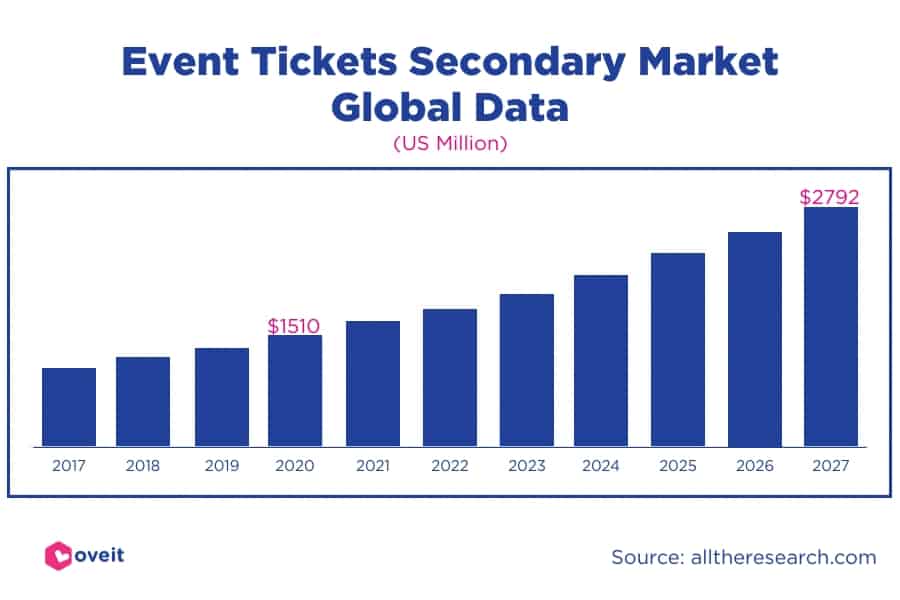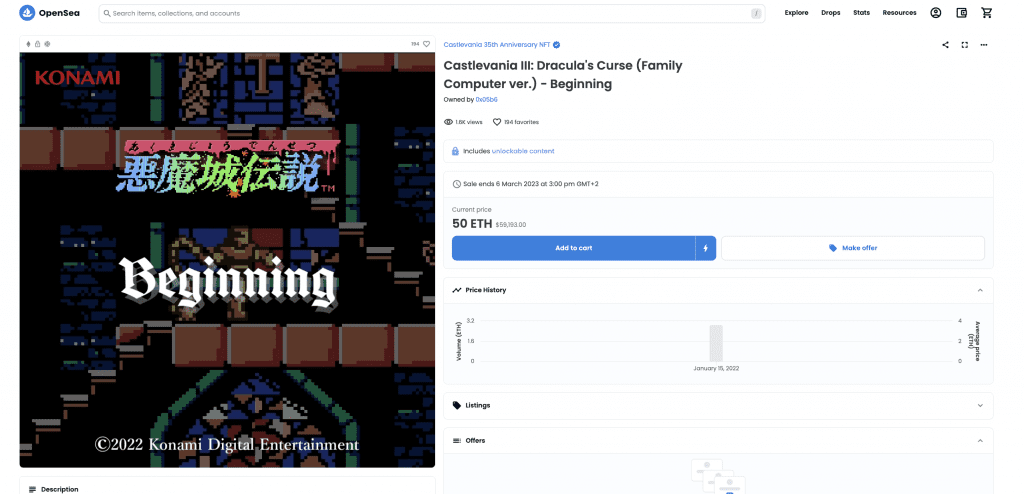While technology becomes more powerful and accessible, industries from all over the world change. The way we do business is not the same. As with any change, technology implementation is also looked at with bad eyes. At least sometimes. But when it proves its utility, it becomes accepted by everyone. Today, we will see if NFTs are useful in entertainment. Of course, as you can guess, there are many benefits associated with the use of NFTs in entertainment. It’s the industry that will be first completely transformed for the better. We will focus on the benefits of using NFTs in the entertainment industry. But first, let’s see what they actually are.
Table of content
What are NFTs?
NFTs in the entertainment industry
Benefits of using NFTs in entertainment
Providing ownership and authenticity for digital assets
Programming the NFTs for the future
Using NFTs for event ticketing
How NFTs are used in the entertainment industry
NFTs in music
NFTs in gaming
NFTs in film and television
Using NFT ticketing for events
The cons of using NFTs
Environmental concerns with NFTs
Accessibility issues related to NFTs
Final words
What are NFTs?
As you already know, NFT stands for non-fungible tokens. Meaning that they are unique items, with unique characteristics, that cannot be divided or replaced. An NFT is a cryptographic asset that represents certain digital or physical goods and its nature makes it impossible to alter it.
As NFTs operate on blockchain networks and they are immutable. Their authenticity and ownership can be verified and guaranteed by the entire network. This, together with the fact that NFTs are minted through a smart contract (a short code that runs when certain predefined conditions are met), makes them powerful.
To put this in other words, NFTs are digital assets that cannot be counterfeited. And that records the item’s complete history. They are associated with digital or physical goods and are pre-programmed to act in certain ways.
NFTs in the entertainment industry
The entertainment industry is one of the most active and creative industries in the world. So it was only natural for it to be one of the early adaptors of this technology. And while NFTs are already used for businesses operating in this field, we’re still in the early days. There are many applications for NFTs that will completely change the industry for the better.
Benefits of using NFTs in entertainment
The entertainment industry is one of the wides fields there are, covering a wide range of activities. Due to its nature, authenticity and ownership are crucial elements of the industry. And as we have seen above, these particular aspects are well covered by the NFTs. Now, let’s take a look at some practical ways of using NFTs in entertainment.
Providing ownership and authenticity for digital assets
As their entire history can be verified (and altering it is nearly impossible), NFTs are synonyms for authenticity. This is one of the reasons why people pay so much money for specific digital artworks. Besides, of course, the hype that surrounds this technology. An NFT guarantees you that you are the sole owner of a specific digital artwork. But that is just scratching the surface of something way more powerful.
Here is an example: Imagine you are trying to buy a very expensive piece of art. A painting for example. To make sure that you are buying the original one, someone needs to check its authenticity. Authenticity often comes in the form of a Certificate of Authenticity, stating that you are buying the original one. Well, regardless of how well the checking is done, I’m sure that there other collectors that have paid good money for extraordinary copies. That has, of course, Certificates of Authenticity. Which, by the way, is a separate asset and they can always be separated for good.
When it comes to NFTs, this “Certificate of authenticity” is actually part of the asset itself. It’s hardcoded within the token, signed by its creator, and checked and approved by the entire network. The blockchain network mentioned above. And each new layer of information is added as a new immutable block of code. When you decide to buy an NFT you are 100% sure of what you are buying.
Having this said, it’s obvious why people are investing so much money in NFTs. They are sure that they are not buying worthless copies – regardless of the actual utility of what they are purchasing.
This is an overview of how authenticity and ownership are tackled by this technology. But now let’s see which characteristics of NFTs can be useful in entertainment. They will, of course, apply to other industries as well. Take a look at how to use them for tourism.
Programming the NFTs for the future
Another incredible asset stands in the smart contract that governs an NFT. This code programs the NFT to act in certain ways when it meets certain conditions. So an NFT can actually do a lot of things for both its issuer and its owner.
You can program an NFT to include future discounts or benefits. A new band that released its first album can use this option to incentivize them to buy it. The NFT can include, besides the actual album, a 15% discount for all future albums they will release. Anybody that supports the artists by buying their first album will enjoy lifetime discounts on their releases.
Allowing fans to actually own your work. Digital items can be tokenized. You’ve heard about the first-ever Tweet sold as an NFT. But you probably haven’t heard about entire movies that went through the same process. Here is an example, one from our own backyard. In 2021, we’ve sold a movie as NFTs. Although this was for a social cause, the same principle could apply to a filmmaker that looks for a way to finance the work. The movie can be tokenized and sold to the supporting community. Fans will not only own part of the work and can receive a cut if the movie becomes a big hit. They are now part owners of the motion picture. A win-win situation indeed.
Setting up royalties. One of the most important benefits of working with NFTs is the potential to set up royalties. This means, that each time the token is (re)sold, a certain percentage goes back to the issuer. This is very important as creative work tends to increase in value over time. It helps creators benefit from the true value of their work.
Using NFTs for event ticketing
As NFT ticketing is what we do here as Oveit, we’ve elaborated on this subject on different occasions. NFT ticketing is one of the best use cases to prove how useful NFTs are to the entertainment industry. But If it would be to name just one benefit, this would be protecting your community. And here is how:
Event ticketing fraud is mainly aimed at ticket buyers. Scalpers are looking for easy money by buying and reselling tickets for outstanding prices. Fraudsters are selling fake tickets. Or they’re selling the same legit ticket to numerous buyers.

With the help of NFT tickets, you can set up upper prices for your tickets on the secondary market as well. Being governed by a smart contract, this smart ticket can limit itself when it comes to price or how many times it can be resold. At the same time, ownership and authenticity are embedded into a smart ticket. This way, no one could ever sell fake NFT tickets or deceive tens of hundreds of people by selling the same ticket.
How NFTs are used in the entertainment industry
Now, after we saw how NFTs can be used to enrich the experiences of the stakeholders in the entertainment industry, let’s take a look at some practical examples.
NFTs in music
There are plenty of examples of how NFTs enrich the music sector. Music NFTs are pretty common as this is a great way for artists and fans to come together. Usually, music NFTs will offer buyers access to exclusive content together with extra benefits for future releases and events.
You’ve probably heard of Steve Aoki, Snoop Dog, and Don Diablo selling NFT Music for millions. What’s amazing is how this technology can support smaller artists to protect their work.
So instead of focusing on the celebrities that sold Music NFTs, let’s take a look at Verdigris Ensemble, a choir from Dallas. They’ve recorded a 21-minute-long unique interpretation, tokenized it, and listed it for auction as an NFT. It was sold for 56.4 ETH (in May 2021 that worth around $375.00) and they shared the revenue amongst those that took part in the recording.
And this is just one of the cases. More independent music artists are tokenizing their artwork and selling it as NFTs. This allows them to have a direct connection with their fans. And support their business through digitalized ownership.
NFTs in gaming

When it comes to gaming, NFTs take a different form, with both already established companies and web3 startups. In the long run, NFTs will allow players not only to swap assets like skins and weapons. But will also allow them to transfer assets from one game to another. By transforming it into an NFT, the item becomes an immutable token and the player has full control over it. Furthermore, players will be able to use them long after they stop playing a specific game. Or if the developer stops supporting it.
Let’s also take a look at some real examples of using NFTs in the gaming industry.
Have you heard of CryptoKitties? This game allows you to collect and trade digital cats and each cat is an NFT. Will web3 evolve around cute cats as well?
Decentraland is a 3D virtual world where users can play, engage and in various activities, and buy virtual land plots. Not a game in the way we are currently used to, but through gamification, they encourage people to be active in a shared digital world.
Focusing on the classics, Konami sold an NFT collection of 14 NFTs to celebrate 35 since Castlevania saw daylight. Along with the income resulting from the direct sale, the company also keeps 10% of future resales in the form of royalties. Showing that they trust the collection’s value will grow over time.
NFTs in film and television
As I have already mentioned, our example is a perfect showcase of how to use NFTs in the movie industry. This is a flawless process that allows communities and artists to work together. Fans can support projects they believe in, while creators have an easy way to transfer ownership toward their supporters.
For The Whishing Tree – Childhood Memories, we’ve extracted 12.432 video frames. We’ve tokenized them, and sold them as NFTs. This way, everybody that wanted to support this movie (revenue went to a non-profit organization that treats patients with palliative conditions) was able to actually own part of it. The price of an NFT is equal to the cost of home visits made by the non-profit. And the number of frames represents the number of visits they made in 2021.

And while The Wishing Tree – Childhood Memories is one of the first movies sold as NFTs, it will definitely not be the last. “Zero Contact”, one of Antony Hopkins’ newest projects, is also set up as a non-fungible token, making the movie a limited collection. One of the main benefits of NFT Movies, deployed on the blockchain ledger, is that it is protected against piracy. But it can also allow NFT owners access to special extra benefits. Physical or digital.
Just like for music, NFTs can support independent filmmakers who can tokenize and sell their work. Buyers become owners of that specific project. And at the same time, they can benefit from special discounts for future projects, access to premieres, or limited and personalized content.
Using NFT ticketing for events
As Oveit is a company focusing on Web3 ticketing and cashless payments, it was impossible for me to omit ticketing from this list. Events, in the form of token-gated events, will probably benefit the most from this technology. It’s not about stopping someone to access your event with a counterfeited ticket. It solved problems much bigger than that.
An NFT ticket is the gateway for a completely new experience. In fact, although we name them NFT tickets, these digital assets are completely different from what we know as event tickets.
The cons of using NFTs
There are a lot of great ways we can use NFTs in. And the entertainment industry definitely benefits them. But just like pretty much anything else, there are some concerns about NFTs. And some of them are valid.
Usually, any subject that generates so much hype is used for PR stunts. NFTs made no difference. So, often NFTs without any practical utility were released. And this, in time, affected the whole community. Luckily, more and more projects showcasing the true utility of this technology were born. But there are still 2 main concerns about NFTs and blockchain technology.
Environmental concerns with NFTs
What makes NFTs powerful is also making them unfriendly to the environment. Each transaction within a blockchain network is checked and approved in a certain way. As these networks grew in size, so does the need for computing power. But, depending on the cryptographic proof needed to operate the system, there are many differences between different blockchains. While the initial proof-of-work protocol used by bitcoin requires large energy resources, a proof-of-stake validation is more efficient. And while this does not completely solve the environmental footprint issues associated with blockchain ledgers (and NFTs), it’s a big step forward to solving the problem.
Accessibility issues related to NFTs

As for any new technology, it will take time until NFTs are mass-adopted. The utility of this technology is helping businesses and customers interact in ways never seen before. But it’s still difficult to deliver these experiences to all potential customers.
The transition from web2 to web3 is going to take place over the next few years. And the success of this transition depends on how easy the onboarding process is. And while early adopters are adopting the new technology, it’s going to take a collective push toward mass adoption.
[…]the approach they’re gonna come to us because we’re this cool culture, this cool movement, is just not realistic. Simplifying the process, improving UI & UX, and allowing for that migration to actually happen. I think anyone that kind of stresses that process and makes sure that that’s an integral point of their product is said to have a lot of users.Soufia Trabelsi, Polygon Studios
Yet, experts from McCann Worldgroup expect that by 2026, there will be more than 2 billion web3 users worldwide, accounting for more than 40% of total internet users. Web3 is rapidly gaining ground. And powered by the benefits they provide, so do NFTs.
Final Words
I hope this article answers the question it’s built around. Although there are (at least) 2 main concerns related to NFTs, the benefits are countless. These new technologies are creating a direct connection between creators and fans. Are allowing communities to easily support artists in a transparent manner. And it helps the latter to reword their supporters.
It’s out of my area of expertise to guess when mass adoption will be reached. But for sure that the critical mass has been reached. The benefits provided by NFTs are allowing us to create better experiences, encouraging end-users to onboard this thrilling ride. So yes, I would definitely say NFTs are useful in entertainment. More than we can even imagine. At least for the moment.

